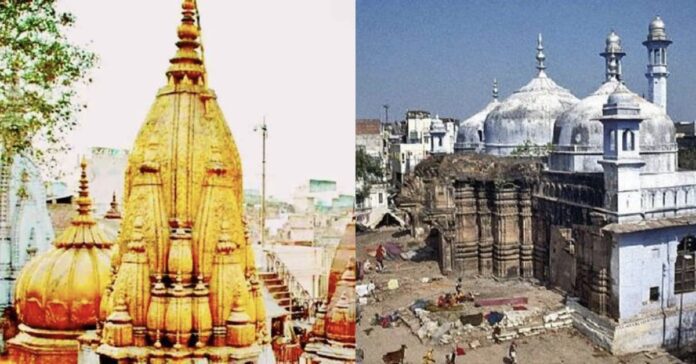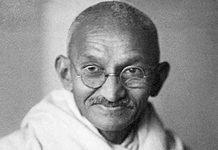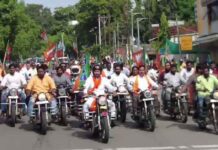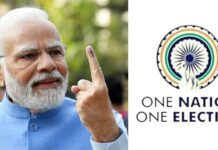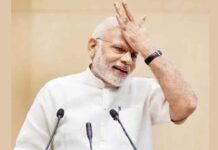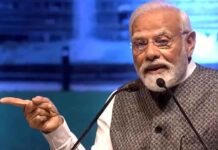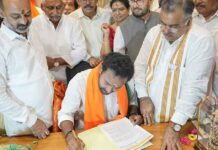The Gyanvapi Mosque dispute is in the news again after the Varanasi court orders the ASI to undertake a physical survey. The work of the ASI is to find if the ruins of the temple are beneath the mosque.
According to the history, Maharaja Vikramaditya built this temple about 2,050 years ago at the spot. However, it also says that Aurangazeb, the Mughal Emperor demolished it in 1669 and constructed a mosque later.
A century later, Ahilya Holkar, the queen of Indore ordered to build a new Kashi Vishwanath Temple beside the mosque in 1780. This shrine of Lord Shiva is one among the 12 Jyotirlingas of Shiva or Vishvanath. Hindus from across the country throng to visit the temple.
When did the Gyanvapi Mosque dispute start?
558 Hindu seers from across the country met in Delhi in 1984. It is known as the first religious parliament. They passed resolutions to claim all the holy shrines in Varanasi, Mathura and Ayodhya.
Firstly, they started the Babri Masjid and Ram Janmabhoomi dispute. The demand for Ram Mandir was at its peak in 1990’s.
The Movement to regain control over mosques in Mathura and Kashi gained strength by now. They often spoke about 3000 mosques. But to start with the Vishwa Hindu Parishad eyed the two mosques – the Shahi Idgah mosque adjacent to Lord Krishna’s temple in west UP, Mathura and the second one the Gyanvapi Mosque built adjacent to the kashi Vishwanath Temple in Varanasi, East UP.
The action of the Government then
As fear gripped the country about the dispute and riots for religious places, the PV Narasimha Rao government enacted the Places of worship (Special Provisions) Act in 1992. This law states that the places of worship should remain as they stood on August 15,1947. To have peace and harmony in the country, this Act as brought in.
However, BJP opposed the Act and misinterpreted it. BJP alleged that the Act was made to appease the Muslims in the pretext of Secularism.
Action by the present Government
Prime Minister Narendra Modi is the MP for the Lok Sabha seat from Varanasi constituency. Just before the 2019 elections, he laid the foundation stone for the Kashi Vishwanath Temple corridor. It is a project of over Rs 1,000 crore. Once it is expanded and beautified the temple would be visible directly from the Ganga ghat.
Why did the communal tension start?
A contractor demolished a platform at the gate no. 4 of the Gyanvapi Mosque in October 2019. This led to communal tensions in the area. The local Muslims came out in protest. The contractor reconstructed the broken structure overnight.
Anxiety among the Muslims
As the work is being done in the Kashi Vishwanath corridor, the anxiety among the Muslims is increasing. They are anxious because they feel that there is every possibility that the Gyanvapi mosque would meet the same fate as the Babri Masjid Mosque.
In a similar manner, demolition of several shops and homes in and around the mosque started. The lanes are broadened. Now the mosque is exposed like never before.
They are not afraid of the corridor but they are afraid that the broadening and widening would allow another attack like the Babri masjid mosque in Ayodhya.
The Varanasi Court’s Order
The Gyanvapi Mosque dispute was registered in the court in 1991. Now the dispute is in the Allahabad High Court. Surprisingly, on 8 April 2021, the Varanasi court ordered for a survey of the mosque. However, the waqf board said that it will challenge the order.
The Court asked the Archaeological survey of India (ASI) to set up a five- member committee. The five-member committee consists of eminent persons who are experts and well-versed in Archeology. The UP government should bear the expenditure.
The court said, “The prime purpose of the Archaeological Survey will be to find out whether the religious structure standing at present at the ‘disputed site’ is a superimposition, alteration, addition, or if there is a structural overlapping of any kind, with or over, any other religious structure.”
Apart from this, the court also gave many instructions to the committee. The next date of hearing is May 31, 2021.

